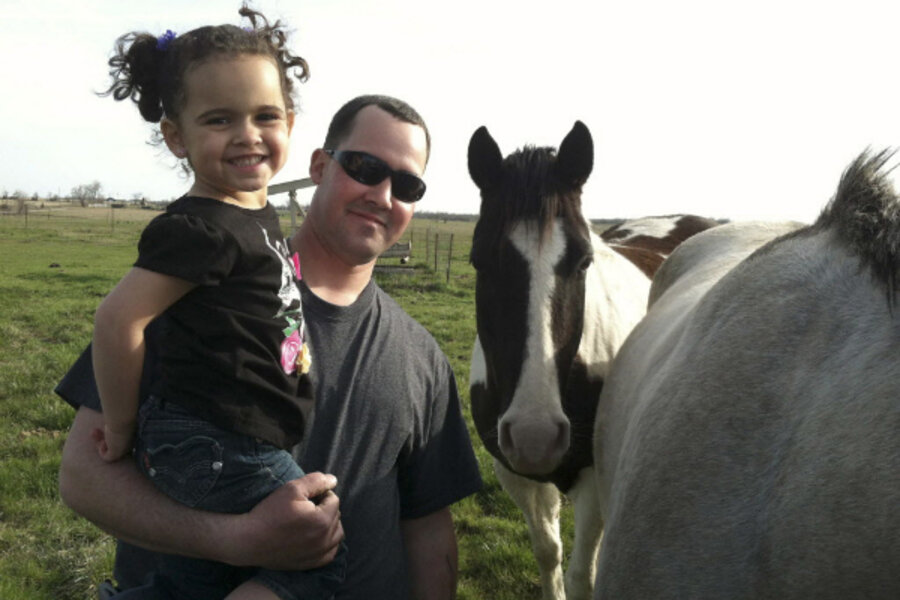Baby Veronica Supreme Court ruling raises the question: What is a parent?
Loading...
What makes a parent?
The answer to this seemingly simple question is, in practice, torturously complex, if the recent adoption case of 3-year-old Veronica Brown is any guide.
Veronica, a Native American, spent the first 27 months of her life with her (non-Native American) adoptive parents. The US Supreme Court ruled 5-4 yesterday that a federal law doesn't compel her to be sent to live with her biological father, who is petitioning for custody under the Indian Child Welfare Act. This leaves her ultimate placement up to a South Carolina court.
The actors in the case include:
- Veronica's adoptive parents (Matt and Melanie Capobianco), who can make a compelling case simply through the time and care they've already given to this young child.
- Her biological father Dusten Brown, who abandoned Veronica before birth but now wants to step up and take custody.
- Her biological mother, who saw a brighter future for Veronica in a loving adoptive home.
- The US court system, which must balance upholding the letter of the law as interpreted by judges and justices with the actual human outcomes of its decisions.
- And the Cherokee Nation, which views the case in the greater context of the cultural assimilation (and destruction) wrought by white settlers on Native American culture in general, and via a historically flawed adoption process in particular.
What unites all of these actors is, nominally, an interest in Veronica's "best interests," a phrase that's no easier to disentangle than "parent." What makes Veronica's case so compelling for an outside observer is the overwhelming power of the forces that tug at her.
If you watch a divorce proceeding and custody battle from an outside perspective, your heart goes out to the children involved, who are being torn between two parents who presumably love them and will care for them to varying degrees to be determined imperfectly by a stranger in a robe. Lives hang in the balance, and two whole families are swept up in the conflict.
Veronica's case has all that tension, plus hundreds of years of historical conflict, the painful question of "what is biological parenthood worth?", and sufficient legal intrigue to escalate the fight to the highest court in the land. All actors involved claim to be acting in Veronica's best interest, but by the sheer weight of their numbers, they can't be - the fight itself has the potential to (adversely) affect the rest of her life.
The proceeding also raises the question of heritage — what is it worth to be aware of your own heritage and connected, on a daily basis, to your own history? Tribal governments have struggled for years with out-of-tribe adoptions shrinking their extended families, and the sense of loss is dramatic and palpable.
Louis La Rose (of the Winnebago Tribe of Nebraska) testified during a hearing on the Indian Child Welfare Act:
"I think the cruelest trick that the white man has ever done to Indian children is to take them into adoption court, erase all of their records and send them off to some nebulous family ... residing in a white community and he goes back to the reservation and he has absolutely no idea who his relatives are, and they effectively make him a non-person and I think ... they destroy him."
Is the Cherokee tribe, in effect, a parent with a compelling interest that might make the Veronica Brown case more than a question of a former non-involved father versus a stable, committed adoptive family? Is there legal ground to consider and value that relationship? And would Veronica be better off if there was?
However these questions are ultimately decided, it's troubling to know that there will, inevitably, be more Veronicas caught up the in courts in years to come — but also comforting to understand that these cases have been increasingly decided by mediation in recent years, as we collectively come to grips with the impact a custody fight can have on the person for whom all the fighting is supposedly for: the child.








